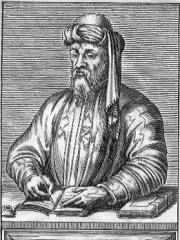
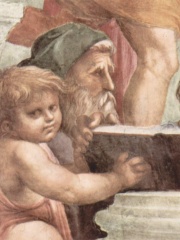
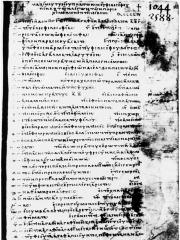
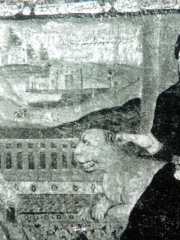
The Most Famous
PHILOSOPHERS from Lebanon
This page contains a list of the greatest Lebanese Philosophers. The pantheon dataset contains 1,267 Philosophers, 5 of which were born in Lebanon. This makes Lebanon the birth place of the 33rd most number of Philosophers behind Australia, and Tunisia.
Top 5
The following people are considered by Pantheon to be the most legendary Lebanese Philosophers of all time. This list of famous Lebanese Philosophers is sorted by HPI (Historical Popularity Index), a metric that aggregates information on a biography's online popularity.

1. Porphyry (233 - 305)
With an HPI of 80.06, Porphyry is the most famous Lebanese Philosopher. His biography has been translated into 55 different languages on wikipedia.
Porphyry (; Koine Greek: Πορφύριος, romanized: Porphýrios; c. 234 – c. AD 305) was a Phoenician Neoplatonic philosopher born in Tyre, Roman Phoenicia during Roman rule. He edited and published the Enneads, the only collection of the work of Plotinus, his teacher. He wrote original works in the Greek language on a wide variety of topics, ranging from music theory to Homer to vegetarianism. His Isagoge or Introduction, an introduction to logic and philosophy, was the standard textbook on logic throughout the Middle Ages in its Latin and Arabic translations. Porphyry was, and still is, also well known for his anti-Christian polemics. Through works such as Philosophy from Oracles and Against the Christians (which was banned by Constantine the Great), he was involved in a controversy with early Christians.

2. Zeno of Sidon (150 BC - 75 BC)
With an HPI of 64.89, Zeno of Sidon is the 2nd most famous Lebanese Philosopher. His biography has been translated into 24 different languages.
Zeno of Sidon (Ancient Greek: Ζήνων ὁ Σιδώνιος; c. 150 – c. 75 BC) was a Greek Epicurean philosopher from the Seleucid city of Sidon. His writings have not survived, but there are some epitomes of his lectures preserved among the writings of his pupil Philodemus.

3. Maximus of Tyre (200 - 200)
With an HPI of 63.54, Maximus of Tyre is the 3rd most famous Lebanese Philosopher. His biography has been translated into 21 different languages.
Maximus of Tyre (Greek: Μάξιμος Τύριος; fl. late 2nd century AD), also known as Cassius Maximus Tyrius, was a Greek rhetorician and philosopher who lived in the time of the Antonines and Commodus, and who belongs to the trend of the Second Sophistic. His writings contain many allusions to the history of Greece, while there is little reference to Rome; hence it is inferred that he lived longer in Greece, perhaps as a professor at Athens. Although nominally a Platonist, he is really a sophist rather than a philosopher, although he is still considered one of the precursors of Neoplatonism.

4. Bahāʾ al-dīn al-ʿĀmilī (1547 - 1621)
With an HPI of 61.20, Bahāʾ al-dīn al-ʿĀmilī is the 4th most famous Lebanese Philosopher. His biography has been translated into 21 different languages.
Bahāʾ al-Dīn Muḥammad ibn Ḥusayn al-ʿĀmilī (Arabic: بهاء الدين محمد بن حسين العاملي; Persian: بهاءالدین محمد بن حسین عاملی: 18 February 1547 – 1 September 1621), commonly known as Sheikh Bahāʾī (Persian: شیخ بهایی), was an Arab Shia scholar, philosopher, mathematician, astronomer, engineer, and architect in Safavid Iran. Born in Baalbek (Jabal Amil, then Ottoman Syria, now Lebanon), he came from a distinguished Arab Shia scholarly family and migrated to Iran in his youth, becoming a leading figure at the court of Shah ʿAbbās I. He stands out as one of the most influential Arab figures, and figures generally, in shaping the scientific, cultural, urban, and intellectual identity of Safavid Iran. He was the principal planner and architectural mind behind the transformation of Safavid Isfahan, credited with devising the overall spatial logic and ceremonial symbolism of the imperial capital. Sheikh Bahāʾī conceived the urban vision behind Naqsh-e Jahan Square and was instrumental in initiating the planning of the Shah Mosque, Sheikh Lotfollah Mosque, and Ali Qapu Palace. His designs also structured the layout of the Imperial Bazaar and he is also associated with hydraulic innovations and water management projects, though attributions such as the Zarrīn Kamar canal remain speculative. As chief advisor to Shah ʿAbbās I, Sheikh Bahāʾī played a central role in defining the symbolic and geometric principles of Safavid civic and religious architecture. His commanding intellectual leadership and cohesive vision, executed through close collaboration with master builders and artisans, were instrumental in forging the Safavid architectural identity. A prolific author in both Arabic and Persian, Sheikh Bahāʾī composed over one hundred treatises spanning jurisprudence, logic, astronomy, mathematics, and theology—primarily in his mother tongue, Arabic. His contributions also extended to literature and poetry, including didactic and mystical verse in Persian. In his Persian work Tashrīḥ al-Aflāk, he was among the earliest Muslim thinkers to propose the possibility of the Earth’s motion, anticipating the later diffusion of Copernican ideas in the Islamic world.
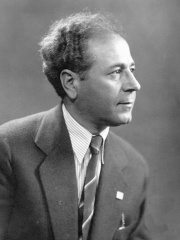
5. Antoun Saadeh (1904 - 1949)
With an HPI of 60.46, Antoun Saadeh is the 5th most famous Lebanese Philosopher. His biography has been translated into 19 different languages.
Antoun Saadeh (Arabic: أنطون سعادة, romanized: ʾAnṭūn Saʿādah; 1 March 1904 – 8 July 1949) was a Lebanese politician, sociologist, philosopher and writer who founded the Syrian Social Nationalist Party.
People
Pantheon has 5 people classified as Lebanese philosophers born between 150 BC and 1904. Of these 5, none of them are still alive today. The most famous deceased Lebanese philosophers include Porphyry, Zeno of Sidon, and Maximus of Tyre.
Deceased Lebanese Philosophers
Go to all RankingsPorphyry
233 - 305
HPI: 80.06
Zeno of Sidon
150 BC - 75 BC
HPI: 64.89
Maximus of Tyre
200 - 200
HPI: 63.54
Bahāʾ al-dīn al-ʿĀmilī
1547 - 1621
HPI: 61.20
Antoun Saadeh
1904 - 1949
HPI: 60.46

